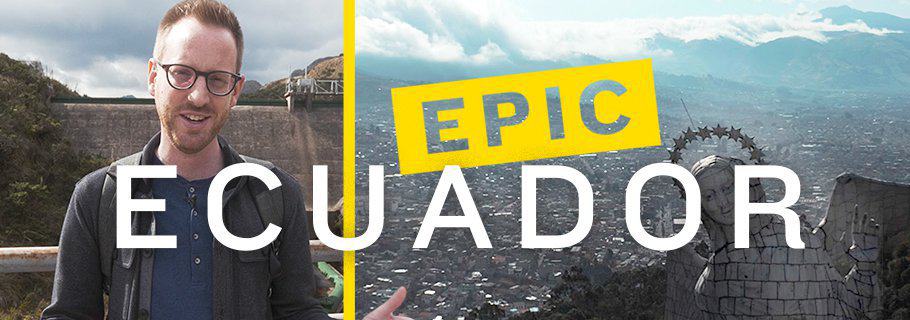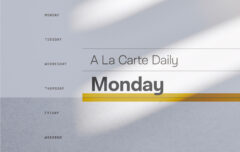Last week I headed south—far south—for the next leg of my EPIC journey. I went to Ecuador where, in very high altitudes and among beautiful landscapes, we tracked down a special object. Here is some of what I saw.
This video is made possible with thanks to Zondervan. They’d like you to know about a book I co-wrote titled Visual Theology. You can learn more here.
Transcript
Tim: Behind me is a dam, but not just any dam.
This video is made possible thanks to Zondervan, and today they want me to tell you about one of my own books. It’s titled Visual Theology and it’s meant to help you both see and understand the truth about God. Stay tuned, I’ll tell you more about it in just a moment.
It’s a beautiful morning here in Quito, Ecuador and we’re here to discover a story. We’re here to discover the story of how Christians took a groundbreaking new technology and unleashed it for the glory of God. We’ve got a bit of traveling around the city and the area to do in order to track it down. We’re looking forward to seeing what we can discover and who we meet along the way.
Now you said, this was once the pulpit to the world. Tell me what you meant by that.
Hermann: Well, a huge amount of the surface of the earth was reached by the waves of shortwave from here, even way behind the iron curtain and Russia, when Russia still was what it was before, during the cold war. And we could reach the Americas, Europe, Asia from here. And I heard this term before from other missionaries that this was the place, the pulpit of the world, broadcasting from here Christian radio programmes in different and various languages to the world.
Tim: Okay, so this wasn’t just broadcasting Spanish, this was broadcasting all different languages and directed at different places, different locations.
Hermann: Oh, yes. If I recall correctly, we’re talking more than 30 languages into the world. It was Spanish, it was Portuguese, it was Russian, it was German, English, we had a huge English department. Many, many languages.
Tim: If you’re going to have a pulpit that reaches the world, transmitters that will broadcast far and wide, it’s going to consume a lot of electricity. How can you afford that without paying exorbitant fees? You’ll create your own hydro plant and that’s exactly what they’ve done here.
Hermann: On every axel here, there is a guide, I think, a vein or a guide, I forgot what they call that in English. Depending on the position, it will generate more electricity or less.
Tim: Okay.
Hermann: Depending on the amount of water that you have available.
Tim: Okay.
So, we’re thousands of feet above the hydro plant that we saw and we’ve come to this dam. What can you tell me about the history of this dam?
Hermann: Well, this dam was built because we needed more storage to generate enough electricity throughout the year to generate and also to feed the transmitters and people and also in Quito and the hospital with electricity.
Tim: Alright, so in order to have electricity all throughout the year you have to build this dam, the whole point being to feed the transmitters, to keep the Gospel going out 365 days a year.
Hermann: Right, correct.
Tim: Okay. And if you don’t build the dam, there will be periods where there’s just simply not enough water flow, therefore not enough electricity.
Hermann: Or, you have to pay a much higher power bill to the electrical company that is there. Or, way back, we were generating with diesel with the generators, that was extremely expensive.
Tim: Right. Now, if we had come here before they refurbished this dam, what would we have seen written at the very top?
Hermann: We would see a sign from the 70’s where it says, water for the glory of God. The water was generating over many decades, electricity to feed the transmitters, to broadcast the Gospel into the world. And they reached almost 80% of the surface of the earth and reached millions and millions of people to change their lives.
Tim: For the glory of God.
Hermann: For the glory of God.
Tim: This video is sponsored by Zondervan and Visual Theology, a book I actually co-authored. You know, as I do, that today we live in a very visual culture. People increasingly rely upon visuals to help them understand new and difficult concepts. The rise and the great popularity of the internet infographic has given us a new way in which we can convey data, concepts, and ideas. Of course, God Himself has often used visuals to teach truth to His people. As both teachers and lovers of sound theology, Josh Byers and I had this deep desire to convey the concepts and the principles of theology in a fresh, beautiful and informative way. In this book, we’ve made the deepest truths of the Bible accessible in a way that can be seen and understood by a visual generation. You can buy the book at Amazon or at Zondervan.com or wherever good books are sold.










